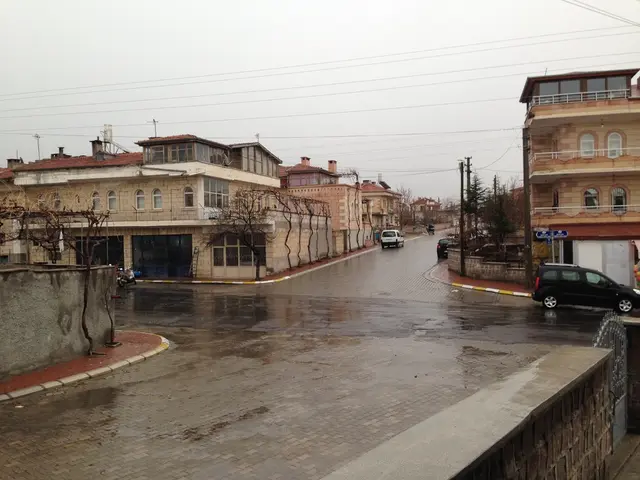Installing 'intelligent' bus shelters in the International District to deter idling, enhance security
In the heart of Albuquerque's International District, a new wave of bus stops is taking shape. The city aims to install 14 new "smart" bus stops along Central Avenue by the end of the year, as part of a larger project to improve safety, cleanliness, and the overall rider experience.
The funding for these new stops comes from city taxpayers, with a price tag of $450,000. Each shelter costs $11,500, making them smaller and sleeker than their predecessors, featuring two seats instead of the usual three to four.
However, not everyone is pleased with the changes. Some academics and people living on the streets argue that these new stops are an expensive attempt to decrease visible homelessness in public spaces without addressing the greater issue. For Cherie Jackson, a homeless person, the new bus stops are another attempt to keep people like her out of sight. Ramona Chino, a regular bus user, finds the new stops uncomfortable and prefers the old ones.
The new bus stops come equipped with rooftop solar panels, intended to power lights, but some commuters have reported that the lights at newly implemented stops near the International District Library haven't been working.
The responsible person for implementing these new smart stops is Albuquerque Transit Deputy Director Bobby Sisneros, with involvement from Albuquerque Mayor Tim Keller and Transit Director Leslie Keener. The International District stops were chosen as part of Phase I to enhance safety and reduce loitering using a new "thin line" shelter design tested successfully there.
Other elements, like the digital arrival sign and trash cans at each stop, will cost additional amounts. Select stops will include screens displaying arrival times, similar to those at the Albuquerque Rapid Transit bus stations.
For John Hector, a commuter, these changes are welcome if they help address the issue of homeless people using bus stops for sleeping or congregating. However, Ehrenfeucht, an advocate for affordable housing, believes that the city should focus on addressing the root cause of homelessness instead of making public spaces less usable.
As the city moves forward with the second phase of the project along West Central, where the funding will come from federal funds, the debate continues about the effectiveness and ethics of these new smart bus stops in Albuquerque.
Read also:
- Duty on cotton imported into India remains unchanged, as U.S. tariffs escalate to their most severe levels yet
- Steak 'n Shake CEO's supposed poor leadership criticism sparks retaliation from Cracker Barrel, accusing him of self-interest
- Hydrogen Energy: Sustainable Innovation or Resource Exploitation?
- Dim outlook for a major energy corporation







